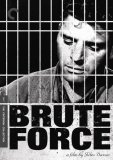| Reviews & Columns |
|
Reviews DVD TV on DVD Blu-ray 4K UHD International DVDs In Theaters Reviews by Studio Video Games Features Collector Series DVDs Easter Egg Database Interviews DVD Talk Radio Feature Articles Columns Anime Talk DVD Savant Horror DVDs The M.O.D. Squad Art House HD Talk Silent DVD
|
DVD Talk Forum |
|
|
| Resources |
|
DVD Price Search Customer Service #'s RCE Info Links |
|
Columns
|
|
|
Brute Force - Criterion Collection
THE MOVIE:
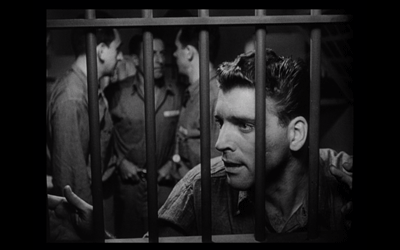
Last month Criterion released Jules Dassin's 1948 cop movie The Naked City, a pro-law film that not only showed that crime didn't pay, but that order was essential to the healthy life of a community. People did bad things, but eventually the system would catch them. There was always hope for a better tomorrow.
It's hard to believe that only a year before, Dassin made Brute Force, a dark prison drama riddled through with a distrust of authority and an overwhelming sense of despair. Men might band together and dream of a kinder world, but as long as the few were in control of the many, they would never achieve it. The situation "inside" was utterly hopeless, and the love and happiness they remembered from the "outside" was never to be regained--if it was even there to begin with.
Like most prison movies, Brute Force centers around one specific gang. You can rest easy, though, because the men of cell R17 aren't the worst of the worst. It's amazing how prison pictures immediately make us sympathize with the inmates and hate the guards. In this case, the guys are all charming fellows with a clear sense of camaraderie and honor. Some of them even have a good excuse for what they did to get tossed in the clink. Their ringleader, the iron-jawed Joe Collins (Burt Lancaster, in his second movie), might have been a hood when he was a free man, but he was also in love with a sweet, ailing woman (Ann Blyth) who adored him. Word that she is dying from cancer has made life in prison even more unbearable for Joe. He has to get out to see her.
Only, Joe has permanently locked horns with the sadistic head guard, Captain Munsey, played with vicious relish by Hume Cronyn. At the start of the picture, R17 is saying good-bye to one of their own. A hearse carries the body away while Joe stands with Munsey in the drizzling rain, forced to watch his friend disappear. Even worse, Munsey has used an informer to finger Joe for the crime, only letting him out of solitary to watch the corpse leave the compound the only way anyone ever gets out. That's how bad a guy Munsey is. He'll kill your best pal and blame you for it. I doubt the cut of Munsey's pristinely tailored uniform was a coincidence. In 1947, memories of the Nazis and Fascists would have still been fresh, and Munsey's pathological attention to crushing the spirits of the men in his charge via an unbending devotion to order was surely meant to be evocative of the atrocities that had just passed. In one subtle and delightful turn of character, Cronyn cleans up the desk in the Warden's office, putting every piece of paper and writing tool in its proper place while delivering Munsey's philosophy about ruling via force of will. If there were trains running through the prison, Munsey would be sure they ran on time.
There is also a touch of socialism in Brute Force, probably not too far-fetched a reading given some of Dassin's political leanings. He would leave the country in a few years under the suspicion of communism, and Brute Force could be a reaction to the smell of McCarthyism on the horizon. Munsey puts all of his prisoners to work in various departments within the prison. The most dreaded is the drainpipe, a tunnel with seemingly no end and no known function that has taken the lives of many workers. All the men within the prison submit to hard labor for very little reward. They eat mush in the cafeteria while Munsey gets bacon for breakfast; they watch Fred MacMurray movies by way of entertainment, whereas he listens to Wagner on his own hi-fi. It's clear who gathers the spoils. It's up to the men to stick together, to watch out for each other if they want to keep from being eaten by the machine. You don't even want to know what they do with informers (or would that be collaborators?).
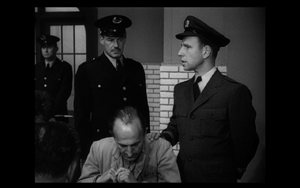

Regardless of whatever political reading your want to give Brute Force, the film is still a rough and tumble prison noir with a heart that pumps with the blood of tough men who can't escape a past that dooms them or the memory of the women they'd do anything for. The early part of the movie shows us how they function in jail and gives us flashbacks to how they got there. Suicide, broken parole promises, and political posturing stack up on Joe and his boys to the degree that they just can't take it anymore, and they plan a daring escape. The plan is to open up the prison gates, creating a pathway to freedom for the entire inmate population, and then...well, more than once they say it's every man for himself. So much for that brotherhood.
This daring escape isn't as glorious as in other prison break movies or even the kind of precise procedural operation that French directors like Becker and Bresson would make so compelling. It's a free-for-fall of violence. The movie was written by Richard Brooks, who would later go on to direct his scripts himself, and who could be counted on to go for the hard option rather than the soft. The melee that erupts in the prison yard is about as bleak as it gets, full of every cruel irony in the book. The final lines of the picture, uttered by the caring but ineffectual prison doctor (Art Smith), may be the most nihilistic farewell in all of noir. It's no surprise they are spoken by an alcoholic, a man who is trapped in a prison of his own making, spending more time medicating himself than he does healing the men in his care. He's learned to abandon all hope the hard way. The ultimate irony is that he has yet to give up trying to fix things. Some poor Sisyphus has to keep pushing that rock up the hill. In a gesture of contrition, showing the poor doc that maybe there is more than what can be contained behind bars, Dassin pulls his camera out of the prison window for our only real-time glimpse of the world beyond since the establishing shots that led us inside. It's not just a figment of the men's nostalgia, life does exist on the outside.
For Brooks' tough, pulpy script, Dassin and cinematographer William Daniels adopt a gristly camera style that is somewhat of a precursor to their Neorealist style that would light up the screen in The Naked City. The black-and-white photography captures the dank confines of the individual cells (six men to each!) and contrasts it with the sterility of the cafeteria and of Munsey's abode. We also see the dirt and the slime of the drainpipe, showing us how far Joe and his men have been pushed down. They are literally in the bowels of the earth, and the stench of the mud and decay almost comes through the screen. What the filmmakers have at their disposal that was not available in their on-the-spot New York film is the ability to play with light in a confined space. The moody shadows of noir come into play here, especially after the prison goes dark for the night. A blinking light from outside their window flashes on R17 from dusk till dawn, an obnoxious taunt to Burt Lancaster. He can never forget this is Hell, because someone keeps flipping the manhole cover that leads back to Earth.
All in all, Brute Force is another winner for Dassin. A multi-textured picture, it has footholds in several genres--film noir, jailbreak movies, political allegories--and it makes a strong bid for classic status in each. It's a cynical parable about the prisons that society builds for men, and the ones men build for themselves. You wouldn't expect a film this old with a title like Brute Force to still hit with this brutal of a wallop, but Jules Dassin and Richard Brooks were more than up for the task.
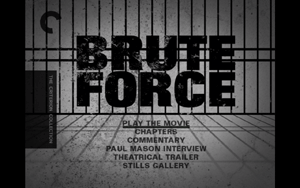
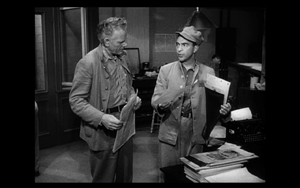
THE DVD
Video:
Criterion has completely restored Brutal Force, and it's one of their cleanest pictures in recent memory. There were no glaring errors, and no real instances of scratches or dirt. The grays are lovely, making way for some really nice, dark blacks. Shown at a full-screen 1.33:1 aspect ratio, the image is picture-boxed to optimize how it will appear on widescreen television sets (note in the screen caps, there are bars not just on the sides, but top and bottom, too). I watched it on an old-fashioned square set and I thought it looked great. It didn't seem squeezed in, and the cropping all looked natural and the image well-centered.
Sound:
The original mono English track is also restored, smoothed out with no glitches or surface noise. Very clear, very sharp.
Extras:
Brute Force – Criterion Collection has several extras to give us some greater insight into the complexity of the film. The most detailed is the new commentary by regular noir academics Alain Silver and James Ursini. The talk keeps a good pace, alternating between covering the history of Brute Force and discussing its composition and greater meaning.
Paul Mason, editor of Captured by the Media: Prison Discourse in Popular Culture, sits down for a 15-minute video interview. He's at the forefront of the No More Prisons reform movement, and so he has a unique perspective, approaching Brute Force from a standpoint of looking at how it reflects real life and how it stacks up to other jailhouse films.
We also get the original theatrical trailer, which sells Brute Force as a lurid crime film, and a stills gallery with on-set photos and promotional materials.
Finally, a 36-page booklet is included with a critical essay by the Village Voice's Michael Atkinson, a 1947 profile of Mark Hellinger (who produced Brute Force, The Naked City, and The Killers), and correspondence between Hellinger and Joseph Breen at the Production Code, fighting over how far Brute Force could go with its portrayal of prison life.
FINAL THOUGHTS:
Highly Recommended. There is much to recommend Brute Force – Criterion Collection. The 1947 prison picture is still a shockingly explicit story of an uprising behind bars, but screenwriter Richard Brooks and director Jules Dassin's movie also works on many other levels, including political and philosophical overtones that rival any contemporary production for guts and precision. Burt Lancaster and Hume Cronyn are awesome as the head inmate and the sadistic guard, respectively, and the story boils up to a violent crescendo that still punches with all the power its title implies.
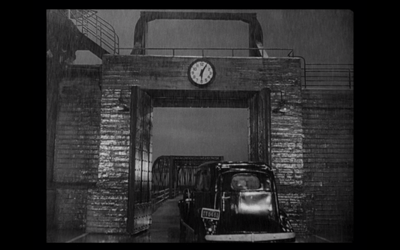
Jamie S. Rich is a novelist and comic book writer. He is best known for his collaborations with Joelle Jones, including the hardboiled crime comic book You Have Killed Me, the challenging romance 12 Reasons Why I Love Her, and the 2007 prose novel Have You Seen the Horizon Lately?, for which Jones did the cover. All three were published by Oni Press. His most recent projects include the futuristic romance A Boy and a Girl with Natalie Nourigat; Archer Coe and the Thousand Natural Shocks, a loopy crime tale drawn by Dan Christensen; and the horror miniseries Madame Frankenstein, a collaboration with Megan Levens. Follow Rich's blog at Confessions123.com.
|
| Popular Reviews |
| Sponsored Links |
|
|
| Sponsored Links |
|
|
| Release List | Reviews | Shop | Newsletter | Forum | DVD Giveaways | Blu-Ray | Advertise |
|
Copyright 2024 DVDTalk.com All Rights Reserved. Legal Info, Privacy Policy, Terms of Use,
Manage Preferences,
Your Privacy Choices | |||||||









